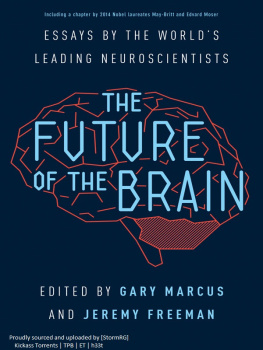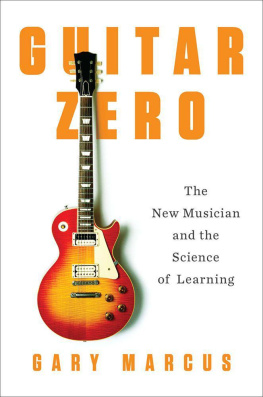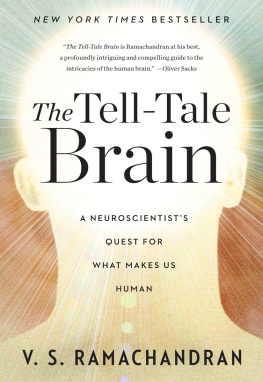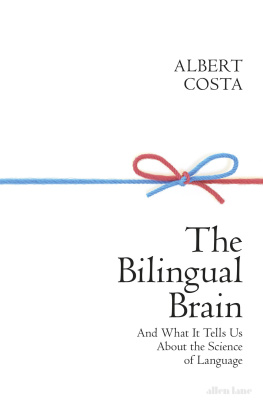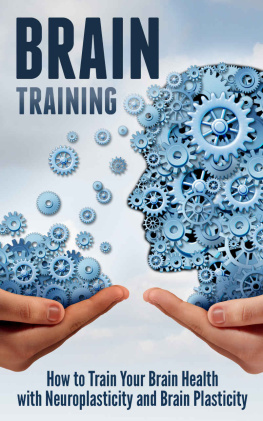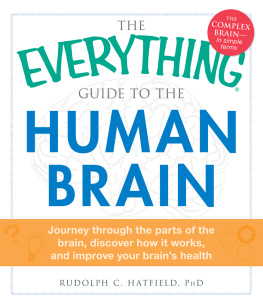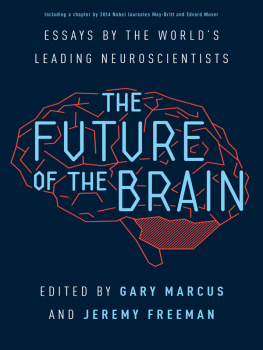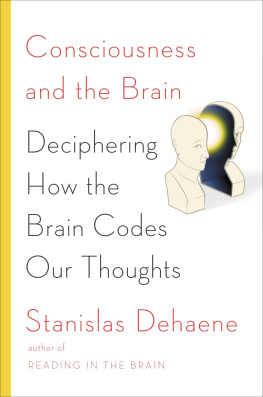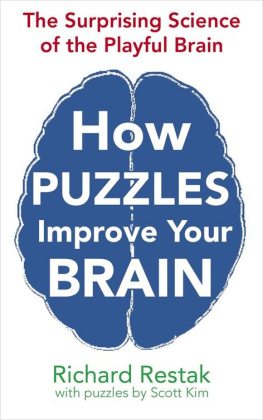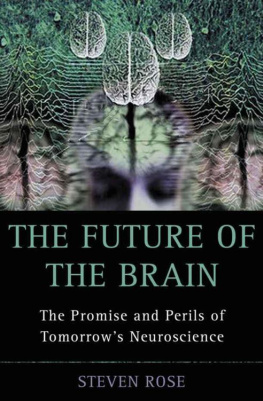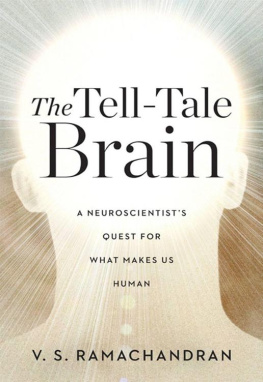THE FUTURE OF THE BRAIN
THE FUTURE OF THE BRAIN
ESSAYS BY THE WORLDS LEADING NEUROSCIENTISTS
EDITED BY
GARY MARCUS AND JEREMY FREEMAN
PRINCETON UNIVERSITY PRESS
PRINCETON AND OXFORD
Copyright 2015 by Gary Marcus and Jeremy Freeman
Requests for permission to reproduce material from this work should be sent to Permissions, Princeton University Press
Published by Princeton University Press, 41 William Street, Princeton, New Jersey 08540
In the United Kingdom: Princeton University Press, 6 Oxford Street, Woodstock, Oxfordshire
OX20 1TW
press.princeton.edu
Jacket design by Karl Spurzem
All Rights Reserved
ISBN 978-0-691-16276-8
Library of Congress Control Number: 2014938489
British Library Cataloging-in-Publication Data is available
This book has been composed in Minion Pro
Printed on acid-free paper.
Printed in the United States of America
10 9 8 7 6 5 4 3 2 1
CONTENTS
Mike Hawrylycz with Chinh Dang, Christof Koch, and Hongkui Zeng
Misha B. Ahrens
Christof Koch with Clay Reid, Hongkui Zeng, Stefan Mihalas, Mike Hawrylycz, John Philips, Chinh Dang, and Allan Jones
Anthony Zador
George Church with Adam Marblestone and Reza Kalhor
May-Britt Moser and Edvard I. Moser
Krishna V. Shenoy
Olaf Sporns
Jeremy Freeman
Sean Hill
Chris Eliasmith
David Poeppel
Simon E. Fisher
Ned Block
Matteo Carandini
Leah Krubitzer
Arthur Caplan with Nathan Kunzler
Gary Marcus
John Donoghue
Kevin J. Mitchell
Michel M. Maharbiz with Dongjin Seo, Jose M. Carmena, Jan M.
Rabaey, and Elad Alon
Christof Koch and Gary Marcus
CONTRIBUTORS
Misha B. Ahrens
HHMI, Janelia Farm Research Campus, Ashburn, Virginia
Ned Block
New York University
Arthur Caplan
New York University, Langone Medical Center
Matteo Carandini
University College London
George Church
Harvard Medical School
John Donoghue
Brown Institute for Brain Science, Brown University
Chris Eliasmith
University of Waterloo, Ontario, Canada
Simon E. Fisher
Max Planck Institute for Psycholinguistics and Donders Institute for Brain, Cognition & Behaviour, Radboud University, Nijmegen, the Netherlands
Jeremy Freeman
HHMI, Janelia Farm Research Campus, Ashburn, Virginia
Mike Hawrylycz
Allen Institute for Brain Science, Seattle, Washington
Sean Hill
Brain Mind Institute, cole Polytechnique Fdrale de Lausanne, Switzerland
Christof Koch
Allen Institute for Brain Science, Seattle, Washington
Leah Krubitzer
University of California, Davis
Michel M. Maharbiz
University of California, Berkeley
Gary Marcus
New York University and Allen Institute for Brain Science, Seattle, Washington
Kevin J. Mitchell
Smurfit Institute of Genetics and Institute of Neuroscience, Trinity College,
Dublin
May-Britt Moser and Edvard I. Moser
Centre for Neural Computation, Kavli Institute for Systems Neuroscience, Norwegian University of Science and Technology, Trondheim, Norway
David Poeppel
New York University
Krishna V. Shenoy
Departments of Electrical Engineering, Bioengineering, and Neurobiology, Stanford University
Olaf Sporns
Indiana University, Bloomington
Anthony Zador
Cold Spring Harbor Laboratory, New York
PREFACE
Theres never been a more exciting moment in neuroscience than now. Although the field has existed for two centuries, going back to the days of Phineas Gage and the tamping iron that exploded through his left frontal lobe, progress has in many ways been slow. At present, neuroscience is a collection of facts, still awaiting an overarching theory; if there has been plenty of progress, there is even more that we dont know. But a confluence of new technologies, many described in this book, may soon change that.
To be sure, there is long history of advances, even from the earliest days, often leveraging remarkably crude tools to great effect. In the mid-1800s Paul Broca got the first glimpse into the underpinnings of language by doing autopsies on people who had lost linguistic function because of brain damage to specific cortical areas. Near the end of the nineteenth century, Camillo Golgi discovered that he could visualize neurons under a microscope by staining them with silver nitrate, and Santiago Ramn y Cajal used the technique to develop remarkably prescient characterizations of neuronal structure and function. In 1909 a brilliant ophthalmologist named Tatsuji Inouye launched functional brain mapping, by methodically studying victims of gunshot wounds during the Russo-Japanese war, noting that wounds to the visual cortex impaired his patients vision, and wounds to particular locations affected vision in particular regions of the visual field.
In the latter part of the twentieth century, noninvasive forms of brain imaging, like functional magnetic resonance imaging (fMRI), came on the scene. But as useful as such tools are, current noninvasive techniques are like fuzzy microscopes; they blur the fine detail of neural activity in both space and time. Ultimately, looking at an fMRI scan is like looking at a tiny pixelated version of a detailed, high-resolution photograph.
In nonhuman animals, which can be studied with more invasive techniques, the gold standard until recently was the single neuron recording, which uses thin electrodes to monitor the electrical activity associated with neural firing. Action potentials are the currency of the brain, and directly measuring them has led to many fundamental insights, such as Hubel and Weisels discovery that neurons in the visual cortex are tuned or selective for particular visual features. But looking at one neuron at a time tells an incomplete story at best; the neuroscientist Rafael Yuste has likened it to understanding a television program by looking at a single pixel.
As we write this, it is clear that neuroscience is undergoing a revolution. Optogenetics, introduced in 2005, makes it possible to engineer neurons that literally light up when active, switching them on and off with a laser; multielectrode recordings, which allow recordings from hundreds or even thousands of neurons are finally becoming practical, and new forms of microscopy can record the activity of nearly every neuron in a living, transparent fish. For the first time, it is realistic to think that we might observe the brain at the level of its elementary parts.
Still, three fundamental truths make the brain more challenging to understand than any other biological system.
First is sheer numbers. Even in the fly or the larval zebrafish brain there are one hundred thousand neurons. In the human brain there are over 85 billion. On top of that, the word neuron makes it sound like there is only one kind, whereas in fact there are several hundred kinds, possibly more, each with distinctive physical characteristics, electrical characteristics, and, likely, computational functions. Second, we have yet to discover many of the organizing principles that govern all that complexity. We dont know, for example, if the brain uses anything as systematic as, say, the widespread ASCII encoding scheme that computers use for encoding words. And we are still shaky on fundamentals like how the brain stores memories and sequences events over time. Third, many of the behaviors that seem characteristically humanlike language, reasoning, and the acquisition of complex culturedont have straightforward animal models.
The Obama BRAIN Initiative, the European Human Brain Project, and other large-scale programs that may begin in Asia aim to address some of the challenges in understanding the brain. It seems reasonable that we can expect, over the next decade, an enormous amount of new data at an unprecedented level of detail, certainly in animals, and perhaps in humans as well. But these new data will raise new questions of their own. How can researchers possibly make sense of the expected onslaught of data? How will we be able to derive general principles?
Next page
